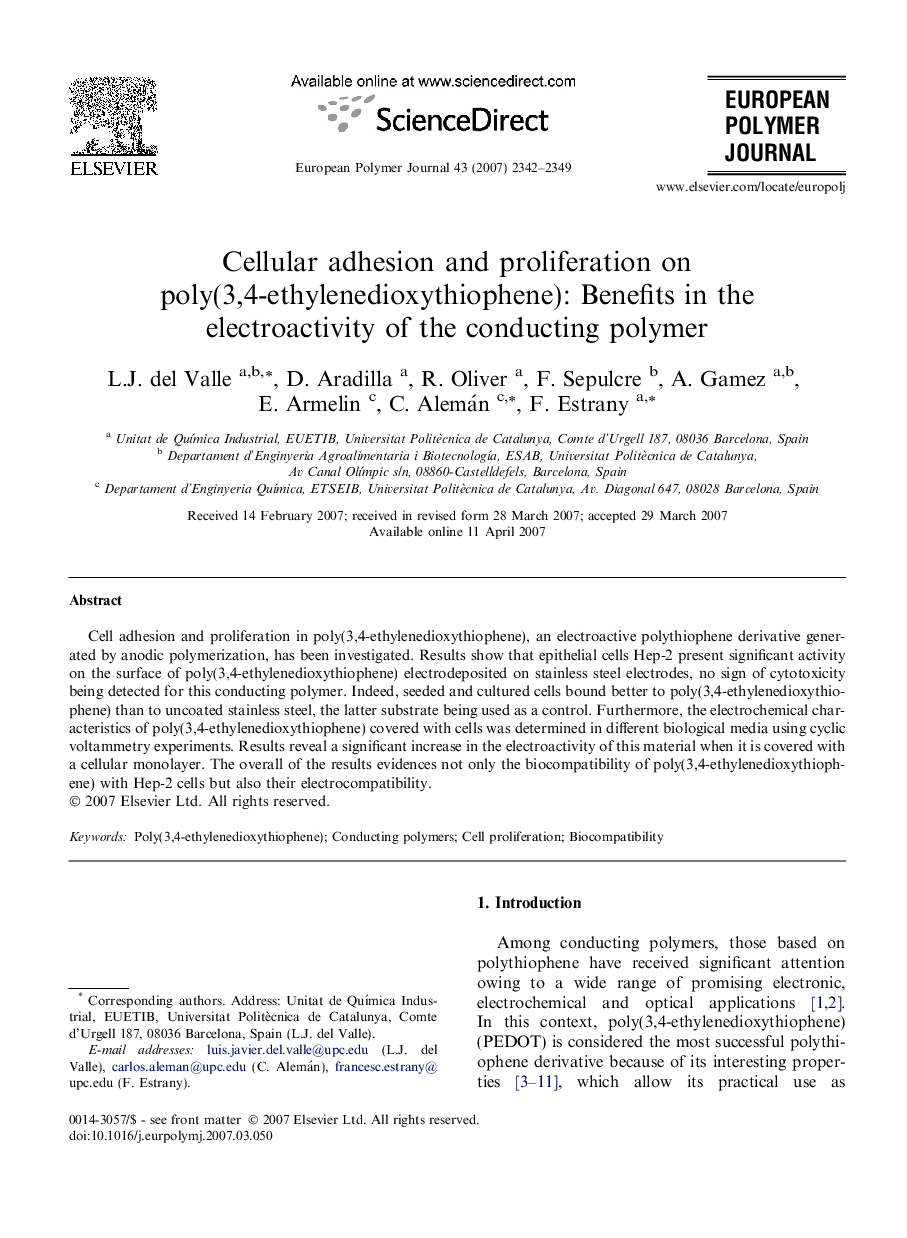| Article ID | Journal | Published Year | Pages | File Type |
|---|---|---|---|---|
| 1396760 | European Polymer Journal | 2007 | 8 Pages |
Cell adhesion and proliferation in poly(3,4-ethylenedioxythiophene), an electroactive polythiophene derivative generated by anodic polymerization, has been investigated. Results show that epithelial cells Hep-2 present significant activity on the surface of poly(3,4-ethylenedioxythiophene) electrodeposited on stainless steel electrodes, no sign of cytotoxicity being detected for this conducting polymer. Indeed, seeded and cultured cells bound better to poly(3,4-ethylenedioxythiophene) than to uncoated stainless steel, the latter substrate being used as a control. Furthermore, the electrochemical characteristics of poly(3,4-ethylenedioxythiophene) covered with cells was determined in different biological media using cyclic voltammetry experiments. Results reveal a significant increase in the electroactivity of this material when it is covered with a cellular monolayer. The overall of the results evidences not only the biocompatibility of poly(3,4-ethylenedioxythiophene) with Hep-2 cells but also their electrocompatibility.
